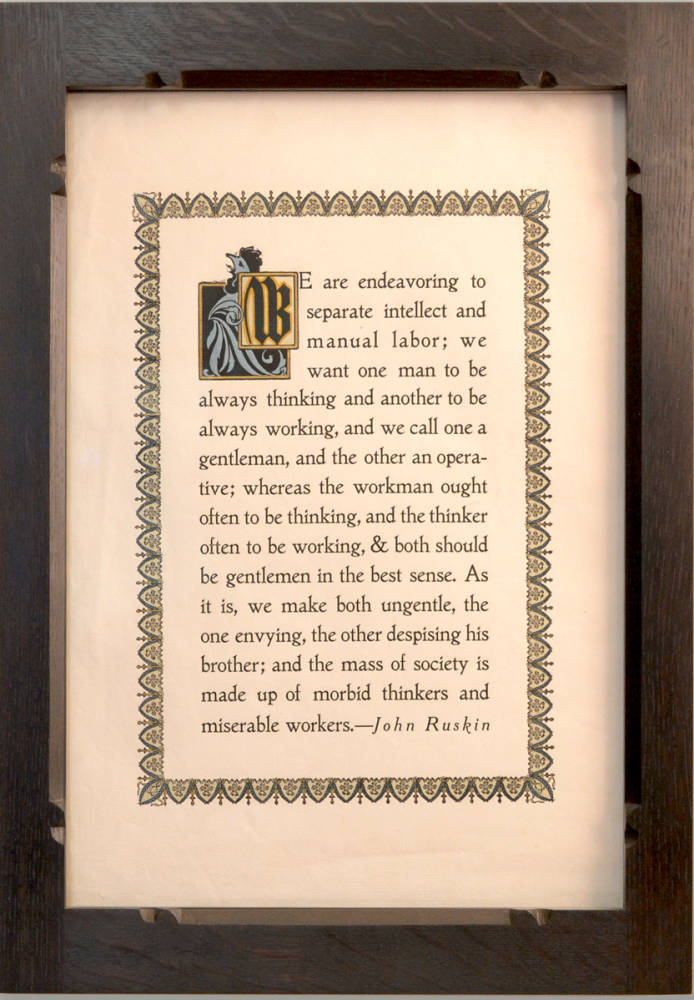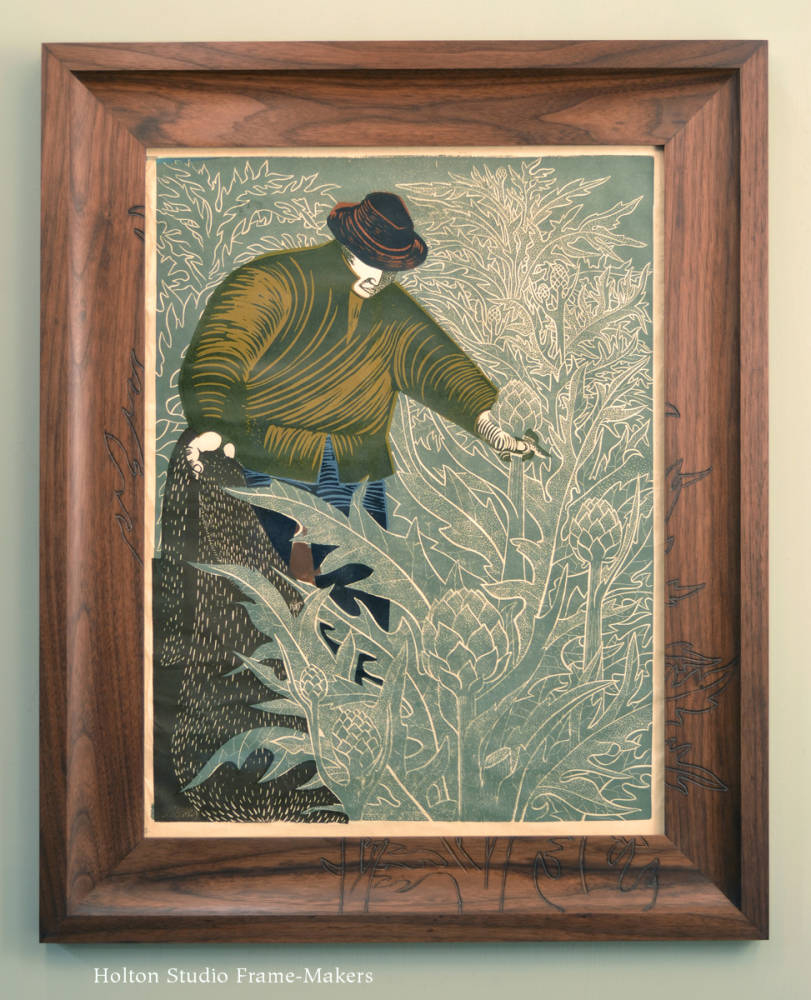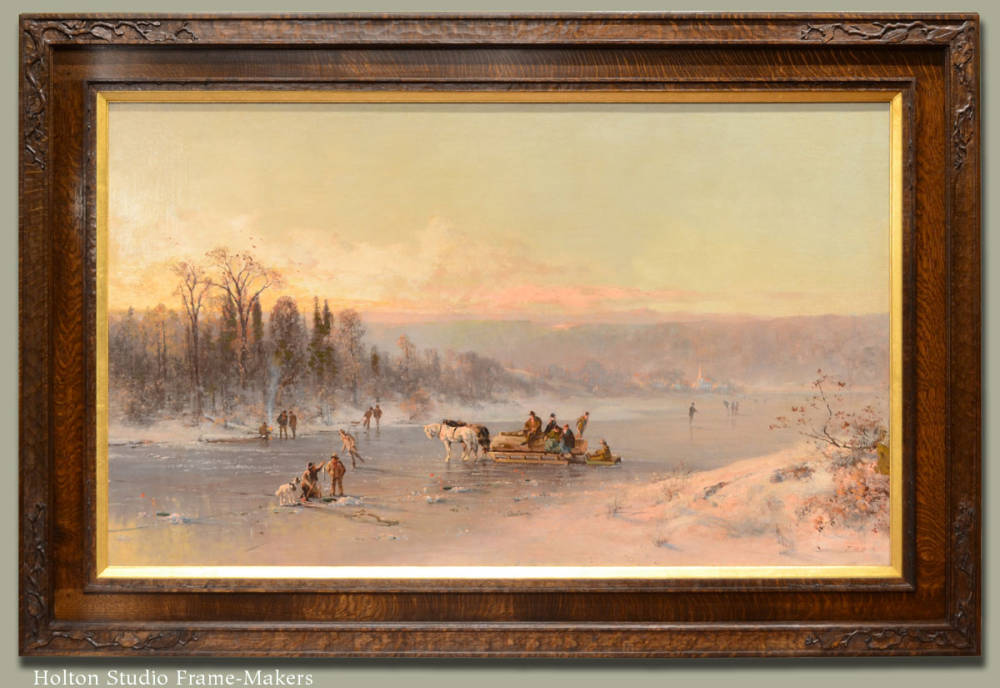
In 1896, a group of neighbors in Berkeley got together to form a Ruskin Club, the ideals they promulgated subsequently informing the early builders of the town; and so because I grew up in Berkeley, I’m sure I unwittingly absorbed Ruskin in some measure right through my pores. Then, of course, there was the turmoil of the ’60s and ’70s and my town at the center of all that, all having little to do with Ruskin but inflaming the minds of young people like me with the sense that the world was off its foundations—debased, and thus falling apart. Although it was many more years before I discovered Ruskin, the circumstances of my life had primed me for not only his ideals and his discontent but his instinct for getting to the forgotten roots of things. I entered adulthood deeply dissatisfied with the superficiality and incoherence of everything—everything but the still discernible material influence of Ruskin in the architecture and hand craft ethos of my city. Guided by that, I found my work—or, rather, accepted my work (work I’d been doing without much enthusiasm since high school). And only then did Ruskin’s thinking really begin to resonate and register with me.

A broadside with Ruskin’s point that one cannot “separate intellect and manual labour.”
At first, his spirit reached me through the more accessible writings of leaders of the Arts and Crafts Movement like Walter Crane, WR Lethaby, MH Baillie Scott, Gustav Stickley, and above all, of course, William Morris. As it has to many I’ve met, Ruskin’s prose felt to me obscure and abstract. But the practical men who followed him (named above) conveyed his thinking and central significance, and in time prepared me to read Ruskin with better understanding. And while these writers remain valuable to me, I could not ignore that they all pointed to Ruskin and his powers of penetration and comprehensiveness and, most of all and most astonishing, interconnection.
Like many, I arrived at Ruskin by the stepping stones of solitary but compelling quotes, and with each step, increasing light, clarity, and meaning.
Having chosen a life of manual labor, what has meant most to me in Ruskin’s thought is the primacy of what he called “the craftsman’s question.” He understood, and insisted in the most trenchant terms that the root of life is in work, in the joining of things, how we put things together, beginning with the whole self—head, heart, and hand. As a picture framer who has whole-heartedly embraced Morris’s mission against “makeshift,” one quotation that’s won me over is, “Have you considered, in the early history of painting, how important also is the history of the frame-maker? It is a matter, I assure you, needing your very best consideration.” It’s a quotation from a lecture on the unity of the arts, the cohesiveness of Medieval Florence before “the great transition,” and is the climax of his argument based on his reading of the architecture of that city. Ruskin, along with Morris, put me on to the understanding that the whole quest and purpose of the Art and Crafts Movement was to restore the unity of the arts and of life by restoring and reviving the place of art—a concern that he himself identified as going right to my own work as a frame-maker. But by using the example of the frame-maker, Ruskin was making the larger point that even the frame-maker, wholly forgotten and ignored by those concerned with the arts had once been absolutely integral to the interwoven fabric of the arts.
I should add that as a picture framer trying to restore and revive a degraded and debased art form, I couldn’t help but hear Ruskin’s message about seeing, and to come to understand my role in helping people see pictures (and through pictures, the significant matters of life)—and thus obeying the Law of Help, “the first law of the universe.”



Three examples of the author’s work. Click on the images to enlarge them and see the carved details.
I must acknowledge the key influence of Companions Sara Atwood and Jim Spates—the latter persuading me to become a Companion myself—and of Clive Wilmer, Master of the Guild, all of whom I’ve befriended and enjoyed many conversations with, and benefited from greatly vis-a-vis grasping Ruskin. Working closely with Sara in particular to organize two Ruskin symposia here in Berkeley has been a joy and full of revelation. My copy of Master Wilmer’s Penguin anthology of Ruskin is the most marked-up book I own. What a wonderful privilege it has been to converse with its author. These and other Companions of the Guild have to me been living proof of Ruskin’s influence as a shaper of kind, humble and helpful souls.
Ruskin’s twin intellectual virtues and powers have themselves framed my window on life. He penetrates to first principles, the great cornerstones of real wealth—the inherently valuable things on which life depends—and, just as importantly, to their interdependence. In a dark and nihilistic age, Ruskin frames a window on as wide a vista as mortals can hope for, and lets in the sun.
Last modified 17 May 2019